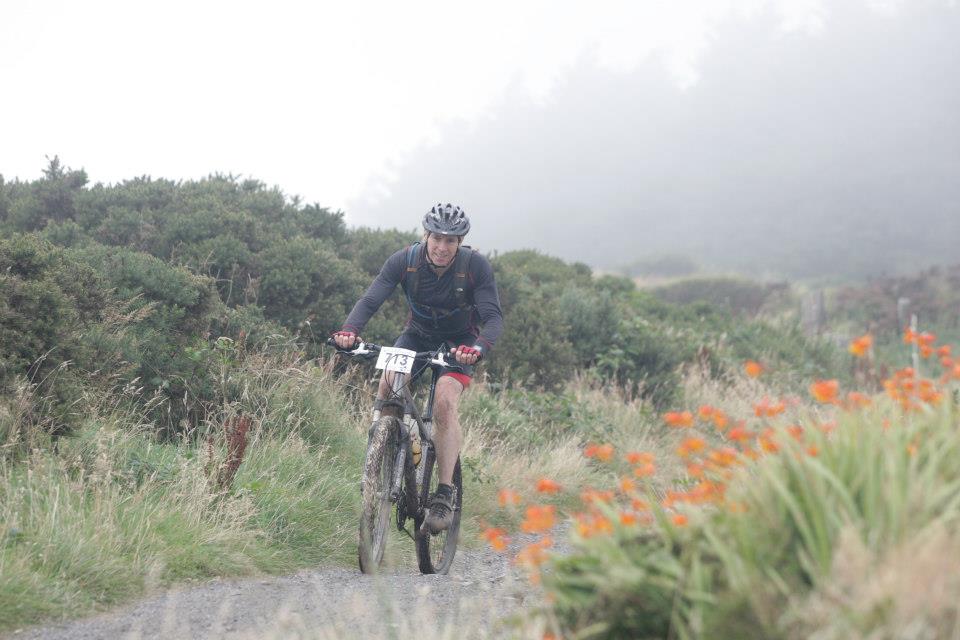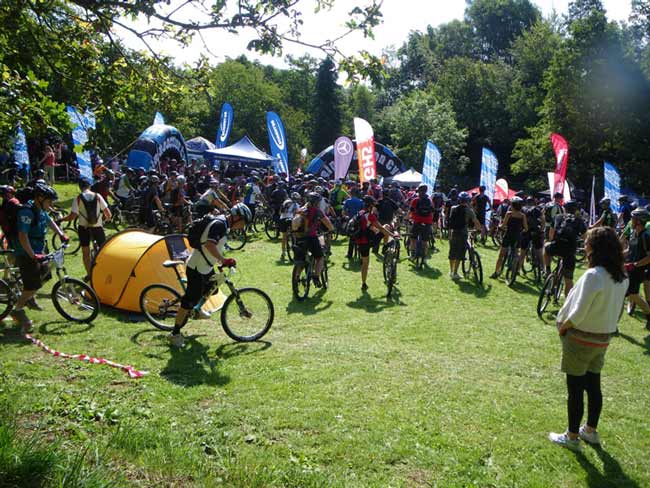Going Ghetto Tubeless
Readers of my diary entries on Forces-of-Nature will realise that I’ve been out mountain-biking quite a bit recently. I generally ride one night a week with a small group of other local mountain-bikers all of whom have tubeless set-ups and don’t seem to get any punctures. I didn’t think there was any need to ‘go tubeless’, afterall I don’t have that many punctures and they are easy to repair on the trail so I didn’t really see the advantages.
 However, after puncturing a couple of times whilst out with the others I did start feeling bad about making them wait around for me whilst I repaired the flat, so I have decided to give in to peer pressure (not something I do too often) and give it a go.
However, after puncturing a couple of times whilst out with the others I did start feeling bad about making them wait around for me whilst I repaired the flat, so I have decided to give in to peer pressure (not something I do too often) and give it a go.
There are several ways to ‘go tubeless’. The first is to buy expensive specialist tubeless rims and tyres. I wasn’t going to go that far and as the tubeless rims and tyres are heavier and more expensive than their standard counterparts I couldn’t really see the advantages of such a system. The next option is to buy a conversion kit for normal rims and tyres, but there is also a third DIY option known as the ‘Ghetto Tubeless System’.
The way it works is you remove the inner-tube from your wheel. You then seal the rim using a strip of rubber to stop air leaking out through the spoke holes, put the tyre back on, put some latex sealant inside the tyre and then inflate it so that the tyre seals onto the rim. The latex sealant then fills any small gaps that might be present. Sounds simple, but reading reports online it can be difficult to get the tyre to seal onto the rim effectively. The main reason for this is that in order for the tyre beads to seal against the rim it needs to by pumped up to a certain pressure in order to push the tyre against the rim, but, as until the tyre is sealed it is difficult to get air into it. A catch 22 situation and most people end up having to use high pressure compressors or CO2 cartridges to get the air into the tyre quick enough… Notth I have at my disposal.
Still, at the weekend I gave it a go. Out came my inner-tube. I then stretched a small 20″ BMX tube over my MTB rim. This tube becomes the strip of rubber than seals the spoke holes in the rim, and its valve is the valve that will be used to pump the tyre up. Next I cut along its centre line so the the tube could fold out over the edges of the rim and then put my tyre back on trapping the now cut inner tube between the tyre bead and the rim. Before adding the sealant I tried pumping the tyre up just to see if I could get a seal. Surprisingly it pumped up straight away without any problems at all. So, in went the sealant, back on went the tyre and in went some air. After a bit of shaking to spread the sealant around I left it to let any small holes seal, and then trimmed the excess rubber away from the 20″ tube.
All seemed to be fine, but the tyre did loose some pressure overnight. Closer inspection showed that the side-walls of tyre were ever so slightly porous and tiny amounts of air was escaping through little pores all over the tyre.
Despite this I did the same to the rear wheel and yesterday had my first ride on the new system. All went well; no punctures, no flats and no issues with the tubeless system. Pressure was maintained throughout the ride as well. The front wheel now seems to hold pressure really well so I’d say that it was completely sealed. The rear one (which I did a day after) still looses a tiny bit of pressure over time, but I think it will seal up fully over the next day or so.
Lets hope they hold up!
Pros
- Lighter (but only just) as you only use a small strip of inner tube, but then have to add sealant)
- Less rolling resistance
- Fewer punctures – most punctures are pinch punctures where the inner tube is pinched as you go over a rock and a hole (or often two) form in the tube. As there is no tube this can’t happen. Also, any punctures from thorns nails etc. should be repaired by the remaining sealant in the tyre.
- Novelty factor
Cons
- A little more expensive than plain old tubes (you still need a new 20″ tube each time you remove the tyre and you need some sealant. However, with fewer punctures it could work out cheaper as I won’t be replacing tubes so often.
- Not so easy to change tyres of you want to ride different tyres for different conditions (not something I do anyway)
- Could be a little messy if I do get a proper flat whilst out riding as I would then have to revert to a tubed system and may get covered in latex sealant in the process
For me the jury is still out but I shall see how it goes over the next few rides.
Check out this You Tube video if you want to see how to do it yourself, and I’ll no doubt keep people up to date within this Ghetto Tubeless thread.















Just an update.. Its been a month now and over 100 miles on my new tubeless tyres and all seems well. they do feel better, they must be lighter, I haven’t had any punctures and they are staying inflated.
A success all round.
Well, I have to say I’ve been impressed and I’m completely converted to the Ghetto Tubeless system. I’ve been riding like this for 3 months or so and have done about 500 miles almost entirely off-road. In this time I’ve had one puncture which was inevitable seeing as the rear tyre had a 1cm long gash in it when I first put it on. When this happened it sealed itself and was perfectly rideable again after about 5 mins and the addition of some air in the tyre. Not bad considering I would have had about 5 punctures over a similar amount of time with tubes.
The rear tyre has now worn down so I changed it yesterday. I did one ride on it first with a tube in it just to help the tyre conform to the shape of the rim and then converted it to tubeless. Once again I had no problems getting a seal and although the tyre is currently loosing a little pressure overnight I expect the sealant to seal it fully after a couple of proper rides.
Ghetto Tubeless…. It’s the future!
For some reason the rear wheel on my new bike started loosing air the other day… It seemed to get worse, so I’ve just added some more sealant, shook it around for a while and then left the wheel on its side and I think it has sealed.
I hope so as I’m off for a night ride in the Dyfi forest tonight.
Thanks. Really interesting. Will give it a go!
I snapped a spoke in my rear wheel the other day (on my new bike) and therefore had to take the tyre off to fix it. I didn’t have a spare BMX inner tube to go Ghetto Tubeless again so had to put a standard tube in and ride tubed again.
Guess what, 2nd ride with a tube at Coed y Brenin yesterday and I get pinch puncture… Whereas since going Ghetto Tubeless about a year ago I hadn’t had a single flat.
Time to get another BMX inner tube and revert to Tubeless I think. It’s definitely less prone to puncturing.
Im still undecided Al, I know I shouldnt say it but Ive only had one puncture in months and months and that was when a latex filled tube exploded on me! I may give tubless a try just to see what all the fuss is about, well see!
Go for it Shem, you know you want to.
I re-converted my rear wheel last night, it didn’t take long to do and is actually quite an enjoyable task once you know what you’re doing.
It feels a little ‘Heath Robinson’ but the result are good.
Al.
What kind of sealant are you using?
Hi John,
I use whichever sealant I can get hold of and all seem to be OK.
I’ve used Geax sealant, Joe’s No Flats sealant and more often than not the cheap sealant from Halfords.
Al.
Do you still run ghetto tubeless?
I’ve just recently converted due to weekly pinch flats.
Yep I do, although the bike I usually ride now has Stans Rims with their own rim/valve tape which negates the need for the ghetto conversion. Tubeless is still the way to go though.
Al.